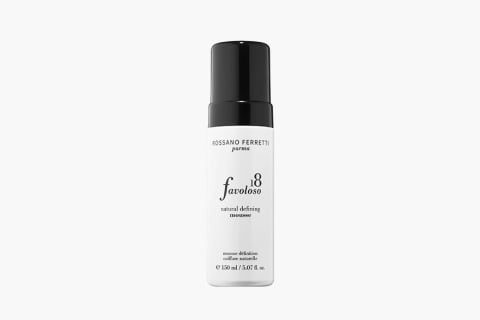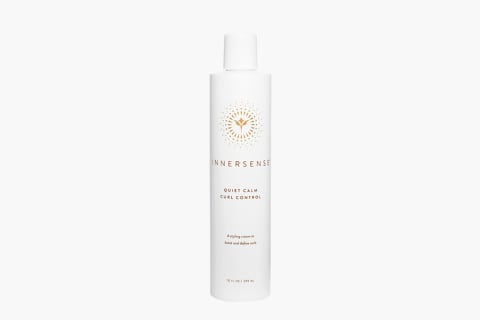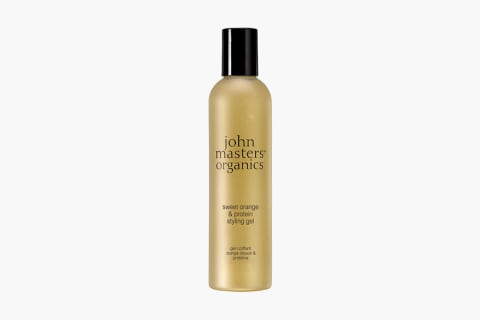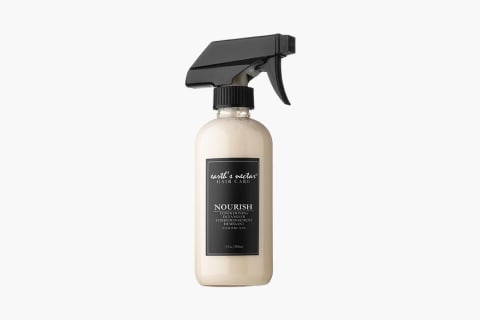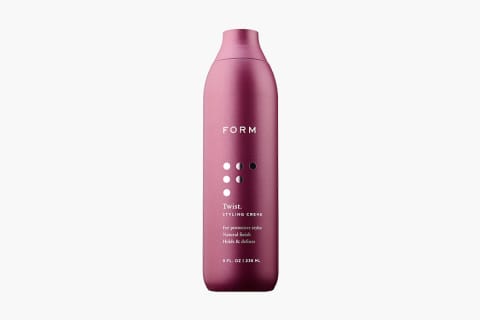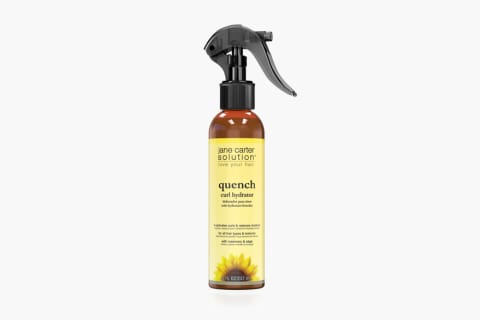Curl & Hair Type: How To Identify Yours + The Best Hair Care Products

For so long all curls were more or less treated the same by many mainstream hair care companies. Have any texture from S-waves to springy coils? You'd walk into the drugstore and there'd be a handful of collections available to you. And as those of us with curls know, that just won't do. There are not only a variety of types of hair and curl types out there, but most people have multiple curl types on their head!
Well, as beauty standards have evolved to embrace a much larger spectrum of traits, our collective understanding on hair texture has too. And with this, an explosion of products geared for any and all. Read on below to find about the various types of hair, hair care products, and your curl pattern.
Why your hair type is important:

"Each curl pattern is unique—you have to know your curl," says hairstylist Levi Monarch. "Understanding your hair is so important. Then from there you can figure out how to go about enhancing your curl."
There is no set, universally established definition of curl types, but the most widely accepted is this handy curl chart (made famous by Oprah's hairstylist Andre Walker, so we have another thing to thank Oprah for). It categorizes curls from 2a to 4c. (Pattern 1, you'll see, is straight, so for the purposes of this article, we'll be skipping that.) Type 2 is wavy, type 3 is curly, and type 4 is kinky; from there, these are broken down into three more subcategories. Being able to differentiate among these helps us talk about hair, understand the nuances, and ultimately be better able to style our own. Knowledge is power!
"Start from scratch: Wet your hair in the shower, and let it dry naturally so you can see what your hair pattern wants to do without any manipulation," says Monarch. "From there, you can start playing with products."
But this isn't an exact science: Most people have a few patterns to deal with, or a patch or two that doesn't seem to fit in with the rest. So you might have to do different techniques for different areas, to make it all uniform. And there are other factors at play: Hair porosity (from high porosity to low prosity), density, and strand thickness. And, sure, these variables tend to be closely associated with certain curl types but not always.
"I cannot stress studying your hair enough. A stylist can only give you recommendations, but essentially you go home with your hair," says Danielle Malary, owner of Lumiere Vive Salon. "Feel your hair out, document how it reacts. Essentially, keep a journal for your hair and learn to love it."
So read on for more info on the various curl patterns, what it means, and how best to style them with natural and clean hair care products. And since there's so much nuance with curls, you might consider mixing and layering products until you find the perfect cocktail for you.
If you want further help identifying your hair type, take our quiz.
Type 2: Waves
Waves (or type 2 hair) range from slight bends to tight S-shapes. They are usually flatter at the root, stick closer to the head, and get larger on the bottom. "They also tend to lose the pattern easier," says Monarch. They can be frizz-prone but are usually less so than other curl types. The density can also range from fine to thick.
Opt for products that are lighter like milks or serums, as heavy oils and creams will weigh down the strands and pattern, says Monarch. Also: "Don't apply products at the root." This type also usually lacks volume, so if you want to amp up your texture, try styling with a mousse with a bit of hold and follow up with texture spray.
- Type 2a: This is closer to straight than curly—think loose curves. This pattern is easy to straighten with a blowout or hot tool. Read more about type 2a hair here.
- Type 2b: This is going to have a bit more curve to it but is still flat at the root. Read more about type 2b hair here.
- Type 2c: Your hair will have defined, tight waves like the aforementioned S. Most people who have 2c waves likely have a few curls in the mix as well.
Type 3: Curls
Consider your ringlets and spirals in this batch. Type 3s range from medium-barrel to tight, like you wrapped the strands around a pen. This type struggles with frizz, and should put some effort into defining the patterns to avoid puffiness. And unlike Type 2, these tend to have lots of volume, as the curl pattern starts at the root. They also tend to dehydrate easier but are not the driest of the bunch.
These curls should invest in moisturizing leave-ins, oils, moisturizing refreshers, and defining creams. "While it's wet, start setting the curls then," says Monarch. "You likely know what areas of your hair are flatter than the rest, so I like to tell women to target those first. The strands that have that natural spring will take care of themselves, but it's important to know what areas need a bit of extra attention."
Here, too, you'll want to focus on definition of the hair strand so you'll get a curlier look, so find a good styling cream, serum or gel that gives you the right amount of hold. Curly hair types should also avoid sulfates and dry detergents at all costs—read: sulfate-free shampoos are your friends.
- Type 3a: Loose curls, these are usually the most finicky of this bunch. (Read: They react to the elements easily.) On a good hair day, they're hydrated, shiny, and with a defined loop. On a "bad" one? Frizz, frizz, frizz. Read more about type 3a hair here.
- Type 3b: Here your spirals are getting tighter, more like ringlets and with a bit of spring. They are also dry, so you'll want to spritz on refreshers between conditioning sessions.
- Type 3c: Hello, volume! This pattern is tight loop, like the pen mentioned above. They're also prone to breakage, like Type 4, and lack moisture. You need to focus on products that will add in hydration and seal in water. Read more about type 3c hair here.
Type 4: Kinks + Coils
Kinks and coils (type 4) are the tightest of the curl patterns: They look like tight Z-patterns, with sharp twists and turns, or coils that could only fit a needle through. Kinks and coils look lush and dense; however, the actual texture can vary quite a bit: The strands range from fine to wiry. They are also the most fragile of the patterns, prone to breakage, tangling, shrinkage, and may have a harder time encouraging hair growth.
Go for moisture and more moisture. "This type of pattern, you can apply oil and creams—wet or dry—and it is going to soak it up," says Monarch, expressing how important it is for this natural hair type to moisturize (seriously, invest in a hydrating conditioner target specifically for dry hair.) "I like to have to have a jojoba or coconut oil on hand that you can add in when you're feeling dry. I always start at the ends and work my way up into the mid-shaft."
- Type 4a: These are more like the spirals in Type 3 than the other two here: These typically have something of a corkscrew-like quality, and can be very springy, tight curls. These retain moisture better than the other curl patterns, too. Read more about type 4a hair here.
- Type 4b: These are tight Zs; think of this like a zigzag pattern. They are prone to shrinkage, so load up on emollients, and then layer on occlusives to seal it in. Read more about type 4b hair here.
- Type 4c: This pattern is delicate and drinks up moisture, too. It will have a very tight pattern, like 4b, but is closer to spirals than zags. Read more about type 4c hair here.
The takeaway.
Your natural hair type and texture is a beautiful thing, no matter if you have straight hair to coily hair. Coming to understand your type of hair just takes some time, care, the right styling products, a ton of moisture, and a lot of kindness.

Alexandra Engler is the beauty director at mindbodygreen and host of the beauty podcast Clean Beauty School. Previously, she's held beauty roles at Harper's Bazaar, Marie Claire, SELF, and Cosmopolitan; her byline has appeared in Esquire, Sports Illustrated, and Allure.com. In her current role, she covers all the latest trends in the clean and natural beauty space, as well as lifestyle topics, such as travel. She received her journalism degree from Marquette University, graduating first in the department. She lives in Brooklyn, New York.


